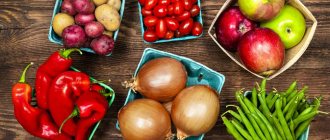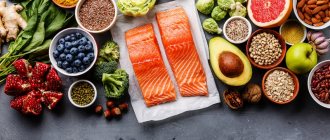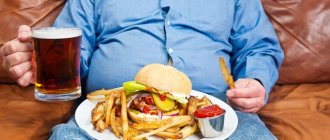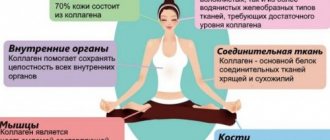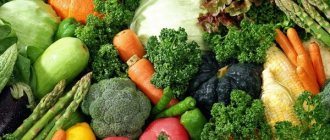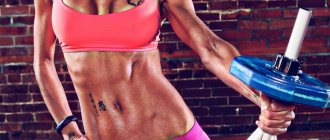Proteins are the basis for the construction of new cells in the body. But sometimes, for medical reasons, it is necessary to reduce protein intake. With a lack of building material, albumin synthesis slows down, and the body uses muscles to maintain basic functions. For a healthy person, you can consume protein-free foods for no more than one week, otherwise health problems will arise.
Principles of a protein-free diet
Protein restriction allows you to reduce weight or relieve excess stress on certain organs. Reducing protein intake is the principle of a protein-free diet. Products containing building materials for the body should be consumed in small quantities.
The diet is not intended for quick weight loss. During this period, it is not recommended to increase physical activity, since protein will be required to replenish muscle energy. A protein-free diet includes a large amount of carbohydrates, which also do not contribute to weight loss.
The daily amount of calories is about 2000. There is no point in using such a diet for weight loss for a healthy person. It is better to have protein-free days a couple of times a week.
Basically, protein restrictions are imposed by doctors for kidney or liver disease. The diet is therapeutic and allows the body to independently remove nitrogenous compounds, which play a negative role in diseases of internal organs.
The role of protein foods in weight loss
When protein is called a building material for body cells, what is often overlooked is that this substance is an indispensable participant in metabolism. With its participation, catabolism (the breakdown of various complex substances into simpler and easier to digest) and anabolism (the creation of new compounds from several others) are impossible. Taken together, this allows you to maintain all body functions at the required level, provide the body with the necessary level of energy, heat exchange, etc. But during weight loss, something else is much more important: active and high-quality metabolism is the key to active breakdown and utilization of fat cells that form subcutaneous reserves. In addition, protein requires quite a lot of energy to be broken down into its constituent amino acids, which also adds to the effectiveness of weight loss.
Fun Fact: The NSCA Sports Nutrition Guide recommends an intake of 1.3-2 g/kg body weight per day for gaining lean muscle mass.
Indications for diet
Protein-free foods are necessary when the following diseases are detected:
- uremia;
- liver failure;
- renal failure;
- glomerulonephritis;
- various liver or kidney tumors;
- urolithiasis disease;
- oncology;
- phenylketonuria;
- to relieve swelling;
- diabetes;
- amyloidosis;
- pyelonephritis.
When these diseases appear and a protein-free diet is abandoned, the kidneys cannot remove urea, which aggravates the course of the disease. Protein can be consumed no more than 20 g per day. However, you cannot completely give up animal protein. But you can make up for the deficiency with milk and fermented milk products.
Low fat cottage cheese
Cottage cheese is a high-protein product.
A 113 gram serving of low-fat cottage cheese (2% milk fat) contains 97 calories, 2.5 grams of fat and 13 grams of protein ().
In addition to protein, from the same serving of cottage cheese you get about 10-15% of the RDA for calcium. Some food scientists have recently suggested that manufacturers add vitamin D to cottage cheese, which helps with calcium absorption, although this is not currently common practice (, ).
There is one drawback to cottage cheese - 113 grams contains about 15-20% of the daily sodium (salt) limit. If you're limiting your salt intake, one study suggests that rinsing cottage cheese for three minutes can reduce its sodium levels by about 60% ().
Read more about the benefits of cottage cheese for the human body on this page - Cottage cheese: benefits and harm to the body.
Summary:
Low-fat cottage cheese is an excellent source of lean protein and calcium.
Benefits of the diet
When using a protein-free menu, you can reduce acidity in the body and control the amount of protein in the presence of certain diseases.
When following such a diet, patients who have problems with the health of the liver or kidneys have the opportunity to improve the body’s metabolism, cleanse themselves of nitrogen compounds, improve the condition of chronic diseases and reduce the manifestations of symptoms in the acute stage.
Red meat
Meat is the preferred at-home protein alternative for many athletes.
Lean red meat has a number of advantages over white dietary meat (chicken, turkey and fish).
In addition to high-quality protein, it is a source of B vitamins, iron and zinc, as well as creatine, a natural stimulator of muscle growth.
Some pros say that red meat is more effective for gaining muscle mass than white meat (chicken, fish) and other natural foods rich in protein. Pro bodybuilder Phil Heath, in particular, talks about the benefits of red meat for gaining weight.
Among the disadvantages - it requires cooking, has a high fat content (unnecessary calories + cholesterol + saturated, not very healthy fats), and takes a long time to digest. (We don’t touch on the controversial ethical issues of consuming the bodies of dead animals ;))
A general recommendation for meat dishes is to choose lean parts of the animal carcass for consumption (they are always available), and when cooking at home, use dietary methods (baking, boiling), without adding extra calories in the form of oil and fat.
7 Beef
Beef is different from beef. Beef protein is one of the best among natural
But it is important to understand that the percentage of fat in beef meat differs in different parts of the animal’s body.
Lean meat from the hindquarters (leg) provides 1 gram of beef protein for every 7 calories; and meat from the back of the animal
provides 1 g of protein for every 11 calories. In the first case, beef meat has lower calorie and fat content, and, as a rule, costs less.
Advice:
When cooking beef at home, fry it quickly over high heat until medium rare, as it gets dry very quickly. When choosing meat in the store, give preference to those brands whose packaging clearly states that it does not contain nitrites and nitrates, the high consumption of which causes some types of cancer.
We recommend: Protein and cancer: Animal protein is one of the main causes of cancer. Interview with a leading expert
8 Low-fat minced meat (5% fat)
Ground beef is also a good protein alternative at home. Fat content of 5% is optimal to ensure taste.
Advice:
Whenever possible, choose pasture-raised (grandmother's) ground beef rather than farm-raised beef. It contains more nutrients and appears to be lower in hormonal growth promoters and antibiotics.
We recommend: Creatine in bodybuilding: what is it and what is it for | Scientific facts
9 Pork
Pork is a very popular food product in Russia, Ukraine and Belarus. It is really rich in protein, as well as fat and cholesterol. This is far from a dietary product. The latter circumstance, multiplied by its popularity, has made it the main cause of the epidemic of cardiovascular diseases in the world, from which the lion's share of all humanity dies.
Tip: If you decide to use pork as a protein replacement, choose lean parts, as well as dietary cooking methods that reduce fat.
Disadvantages of the diet
The disadvantage of using protein-free products in nutrition is that they cannot be used by athletes, as well as people with difficult physical working conditions. Great physical exertion and increased activity require a constant supply of proteins. Therefore, it can be used only at the stage of exacerbation of the disease, with a decrease in strength loads.
Protein deficiency is stressful for the body, and a long-term diet is difficult for some people. Therefore, before using a protein-free diet, consultation with a doctor is required to avoid complications after dietary restriction.
Daily norm
Proteins are most actively consumed after physical exercise (to restore muscle cells), as a result of illness, after long-term diets with a pronounced calorie deficit and mono-diets. In such cases, it is recommended to consume protein at the rate of 1-1.5 g per 1 kg of body weight. But if your lifestyle is far from active, and your muscles rest more often than they work, it is recommended to reduce the amount of protein to 0.75 g per 1 kg of body weight. Of course, periodically exceeding or reducing the proportion of proteins in the diet will not cause damage to health and is unlikely to even be noticeable. But long-term experiments with this substance (excessive amounts or severe deficiency) will negatively affect well-being, appearance, and even weight loss progress: in an attempt to cope with protein intoxication or the lack of building material for cells, the body reduces energy consumption and goes into energy saving mode. As a result, subcutaneous fat ceases to participate in energy metabolism, and weakness and increased fatigue do not allow returning to training or conducting it at a sufficiently active level to accelerate the metabolism to normal. But monitoring the amount of protein in your diet is not enough. It is advisable to organize meals so that the menu includes all types of proteins.
Authorized Products
When using a protein-free diet, the list of foods allowed for consumption is quite large. Depending on your doctor's prescription, you can eat 20-40 g of protein per day. Based on these data, the amount of protein and protein-free foods eaten is determined.
List of foods allowed on a protein-free diet:
- Turkey, beef, chicken, veal. The serving is no more than 55 g per day. The dish can be fried or baked.
- Weak tea, coffee.
- Herbal decoctions, compotes.
- Juices.
- Milk and fermented milk products, cottage cheese in limited quantities.
- Fruits can be eaten raw if there are no other contraindications. Otherwise you can bake it.
- In small quantities you can eat pasta dishes, porridge, peas, beans, beans.
- Butter and vegetable oil.
- Egg white (no more than 1 piece per day).
- Raw or cooked vegetables. Potatoes, carrots, cucumbers, zucchini, beets, cauliflower, broccoli, tomatoes.
- Protein-free bread in the amount of 300 g per day.
- Vegetable broths.
- Soups on the water.
- Low-fat fish, no more than 60 g per day.
When following a diet, salt is prohibited or its minimum amount is allowed. The list of products may vary depending on concomitant diseases.
Foods containing the most protein
If you categorize all protein-rich weight loss foods according to the amount of protein, the list will look like this:
- Soy – 36 g protein / 100 g product.
- Goose meat – 29 g/100 g.
- Tuna – 29 g/100 g.
- Hard cheese – 23-29 g/100 g.
- Chum salmon caviar – 27 g/100 g.
- Salmon – 25.5 g/100 g.
- Chicken – 25 g/100 g.
- Pork – 25 g/100 g.
- Lamb, turkey, rabbit – 24 g/100 g.
- Beef – 23 g/100 g.
- Almonds, black beans – 21 g/100 g.
- Liver – 18-19 g/100 g.
- Chickpeas – 19 g/100 g.
- Chicken egg – 13 g / 1 pc.
- Whole milk – 3 g/100 g.
Prohibited Products
For those who are recommended to eat protein-free foods, the list of foods allowed for consumption is quite large. But there are still dishes that cannot be eaten at all or with restrictions.
List of prohibited products:
- broths from meat, fish, poultry;
- alcohol;
- carbonated drinks;
- animal fats, lard;
- confectionery;
- baking
Products that are partially prohibited or limited in quantity:
- meat, poultry;
- fish;
- legumes;
- porridge;
- pasta;
- if you have kidney disease, salty foods are prohibited;
- There may be restrictions on fruits containing potassium and phosphorus.
Potassium is found in apples, bananas, beets, tomatoes, soybeans, and lentils. Therefore, their use should be agreed with a doctor if you have kidney disease. It is also worth clarifying the permissible amount of milk, legumes, fermented milk products, and nuts, which are limited in some kidney pathologies.
White fish (fish with white meat)
Most white fish are excellent sources of lean protein, containing less than 3 grams of fat, about 20-25 grams of protein, and 85-130 calories per 100 gram serving (,).
Very lean white fish include: cod, haddock, pollock, flounder, halibut, tilapia and Atlantic roughy ().
The meat of these fish contains 4-10 times less omega-3 fatty acids than is found in higher-calorie and fatty fish varieties that have darker meat, such as coho salmon or sockeye salmon. Therefore, it is useful to eat both types of fish (lean and fatty) (,).
Summary:
White fish such as cod and halibut are excellent sources of lean protein with little fat and relatively few calories, making them suitable for a variety of diets.
Diet according to Andreas Moritz
Andeas Moritz is a developer of alternative medicine. He recommends using protein-free foods to cleanse the liver and kidneys.
In his opinion, for a full healthy life you need long-term healthy sleep, an active lifestyle, proper nutrition and timely cleansing of the body. To cleanse the whole body, you must first clear the intestines of toxins, then the liver, kidneys and lymph. Thanks to this, toxins are removed and hormonal levels and enzymes are restored.
In his opinion, it is necessary to give up meat and dairy products, giving preference to rice, fruits, vegetables and berries.
According to this method, the intestines are cleansed using an enema, then for 1 day only fruits are consumed to cleanse the kidneys. The next day, oatmeal is eaten in the morning and you can eat only plant foods for 6 days.
Reviews from doctors about this method of alternative medicine are mixed. It is assumed that this method may worsen chronic diseases of the gastrointestinal tract. Therefore, when choosing the Andreas Moritz method, you must first consult with a gastroenterologist or therapist.
As a result of using this method, you can obtain the following results:
- restoration of intestinal function;
- restoration of vital energy;
- pigmentation and skin rashes are reduced;
- increasing immunity.
Probiotics for weight loss
Probiotics are live microorganisms that help normalize the intestinal microflora; they also help remove toxins from the body, normalize the enzymatic activity of the gastrointestinal tract, help properly break down food, are responsible for the absorption of only useful substances from the intestines, restore intestinal motility, improve protective functions of the body, restore metabolism, which is so necessary for the process of losing weight.
Bifidumbacteria and lactobacilli are mainly used as restorative probiotic microflora. In ordinary products they are not present in a living state and in sufficient quantities, so there is a number of pharmaceutical preparations with probiotic activity, and there are a number of products enriched with bacteria. But the most important thing is that from fortified products (these are finished products to which dry, non-viable bacteria have been added) and from pharmaceutical preparations, which also contain these bacteria in a dry, non-viable state, these bifidumbacteria and lactobacilli do not take root in the intestines. In order for these bacteria to colonize and multiply in the intestines, to restore the qualitative and quantitative composition of bifidumbacteria and lactobacilli, they must be alive, at a certain stage of growth. Such an active state of bacteria can only be obtained with certain technologies for fermenting milk with these bacteria. Then they grow in milk, accumulate in the required concentrations and are ready for colonization from the first servings of such products.
We have developed a unique fermented milk probiotic product bifilact BIOTA using a special technology, where bifidumbacteria and lactobacilli accumulate in medicinal quantities during the fermentation of milk, in a living state and in high readiness for colonization in the intestines (“The healing properties of bifilact BIOTA”). Therefore, after using BIOTA for a course or with its regular use, beneficial bacteria effectively restore the intestinal microflora and all its functions. This helps to improve the health of the whole body and leads to normal weight. To do this, BIOTA must be taken in combination with other weight loss measures, 150-200 ml 2-3 times a day 30 minutes before meals or as a separate meal (second breakfast, afternoon snack, dinner).
How do bifidumbacteria and lactobacilli fight excess weight?
- prevent the absorption of fats;
- increase the amount of fat excreted in feces;
- help release a hormone (GLP-1) that reduces appetite. Increased levels of this hormone also help in burning calories and fat;
- increase the level of ANGPTL4 protein, which also leads to a decrease in body fat;
- There is also a lot of evidence that obesity is associated with brain inflammation. Probiotics reduce systemic inflammation and protect against obesity and other diseases.
- reduce the amount of leptin circulating in the blood (one of the 4 main hormones responsible for weight). Chronically elevated leptin levels have been shown to be associated with obesity, overeating, and inflammation in the body, including hypertension, metabolic syndrome, and cardiovascular disease.
Here is some research evidence on the effective use of probiotics in weight loss programs:
- Over a 3-month period, women taking probiotics lost 50% more weight compared to the placebo group. They also continued to lose weight during the weight maintenance phase after losing weight.
- 210 people with a lot of belly fat reduced body weight, fat around organs, body mass index, waist size and hip size over 12 weeks. Moreover, fat was reduced by 8.5%.
- Weight loss is not the final result in the fight against obesity. Preventing weight gain after losing weight is even more important. Probiotic strains can be effective in preventing weight gain even on a high-calorie diet.
The above facts convincingly show the need for the use of live probiotic bifidumbacteria and lactobacilli for weight loss. It is live bacteria that will settle in the intestines and will contribute to the effect of normalizing weight. Bifilact BIOTA is an indispensable dietary product with live bacteria that can easily be included in any diet.
Diet recommendations
When using the diet, you should follow some recommendations to eliminate the risk of unpleasant reactions in the body:
- Drink at least 2 liters of water per day. This recommendation does not apply to kidney pathology. The drinking regime is chosen in accordance with the doctor’s recommendations.
- The amount of protein per day should not exceed 20% of the amount of food eaten.
- Before using the diet, consult a doctor.
According to reviews from patients undergoing treatment and using a protein-free diet, weight loss occurred insignificantly. In the absence of salt, weight loss in the first days occurred due to the removal of excess fluid from the body. In the absence of protein, the feeling of hunger returns quickly, so patients are forced to increase portions. Accordingly, more calories did not allow weight loss.
Limiting salt makes dishes tasteless, so this diet is difficult. But at the same time, diet foods are inexpensive.
What are the dangers of an excess of protein products in the diet?
Of course, high protein foods are indispensable for weight loss. But you can’t rely only on proteins that will build you a beautiful body and keep you healthy. Without enough fat, the breakdown of subcutaneous fat tissue slows down, and without carbohydrates, energy levels decrease so much that progress in losing excess weight is unlikely to please. With an excess of protein in the diet, health suffers even more. Unnecessary protein - which will not be used for the structure of cells and their restoration and will not take part in metabolism - is eliminated from the body through the kidneys. Accordingly, the more protein in the diet, the higher the load on these organs. And if the kidneys do not cope well enough, or there are more proteins than they are able to process, then a condition arises that can be called protein intoxication - poisoning of the body with protein breakdown products.
Menu for the week
When creating a protein-free menu, you should take into account nutritional principles. The number of permitted foods is sufficient for a varied diet. Sample menu for 7 days for patients without additional restrictions:
| 1 day | breakfast | buckwheat porridge with milk, fruit, tea |
| snack | grapefruit | |
| dinner | vegetable soup, pasta with chicken | |
| afternoon tea | kefir | |
| dinner | zucchini and stuffed with vegetables | |
| Day 2 | breakfast | oatmeal with jam |
| snack | stewed carrots | |
| dinner | noodle soup, sautéed vegetables, compote | |
| afternoon tea | curdled milk | |
| dinner | carrot cutlets, apple juice | |
| Day 3 | breakfast | pumpkin casserole |
| snack | orange | |
| dinner | semolina soup, zucchini pancakes, compote | |
| afternoon tea | Ryazhenka | |
| dinner | fresh vegetable salad, rice porridge | |
| 4 day | breakfast | oatmeal porridge with milk, tea |
| snack | baked apple | |
| dinner | puree soup, rice with vegetables, fish | |
| afternoon tea | kefir | |
| dinner | millet porridge, tomato | |
| 5 day | breakfast | pumpkin casserole, tea |
| snack | vegetable salad | |
| dinner | buckwheat soup, stewed vegetables, compote | |
| afternoon tea | Ryazhenka | |
| dinner | fruit pilaf, jelly | |
| Day 6 | breakfast | zucchini pancakes, cheese, tea |
| snack | apple | |
| dinner | buckwheat with chicken, vegetable soup, compote | |
| afternoon tea | kefir | |
| dinner | mashed potatoes, carrot cutlets | |
| Day 7 | breakfast | oatmeal with jam, compote |
| snack | pear | |
| dinner | cabbage soup, baked potatoes with pollock | |
| afternoon tea | yogurt | |
| dinner | cabbage rolls with vegetables, juice. |
What kind of protein is there?
In 1 liter of milk - about 30 g of protein, in 1 egg - 5-6 g, in 200 g of meat or fish - about 32-36 g.
Protein is produced from natural products, unlike mayonnaise, sauces, ketchups, canned food containing "food chemistry".
Egg. The most expensive and “perfect”. Contains all amino acids. Has the highest digestibility.
Whey protein concentrate has the highest rate of breakdown and is therefore very popular. Affects muscle development and maintaining athletic fitness. Recommended to be taken between meals.
Soy. Well balanced in amino acids. Ideal for vegetarians. Restores muscle mass, saturates with essential microelements and vitamins, and maintains cholesterol levels. Recommended for overweight people.
Collagen. It does not build muscle mass, but strengthens ligaments and joints.
Casein. Made from curdled milk. Absorbed within 6 hours. Recommended to take before bedtime. Most infant formulas are made from casein protein.
Diet for illnesses
Protein-free foods for patients with phenylketonuria play an important role for neuropsychic development. The protein contains phenylalanine, which has a detrimental effect on the patient. For this reason, all foods containing large amounts of protein are excluded from the diet. Such patients are recommended to take multivitamin preparations to compensate for the deficiency of essential microelements.
In case of acute renal failure, a diet is prescribed with a protein limit of up to 20 g per day. The patient has to keep track of the amount eaten in order to avoid sad consequences. As you recover, the amount of protein is increased to 40 g per day.
In liver cirrhosis, additional amounts of protein lead to encephalopathy. For this reason, its quantity is also reduced.
Egg white
You can eat whole eggs as part of a heart-healthy diet, but if you want to reduce your cholesterol intake, just eat egg whites (, ,).
The white of one large egg contains 16 calories, which is less than 25% of the calories contained in a whole egg. Additionally, one egg white contains less than 0.5 grams of fat but 3 grams of protein, which is approximately 50% of the protein in a whole egg (, , , ).
In addition to egg whites, you can also buy powdered egg whites with minimal or no additives. These foods are pasteurized so you don't need to cook them to ensure food safety ().
Mix powdered egg whites with water and use them as fresh egg whites. You can also add powdered egg whites to shakes, smoothies, or homemade protein bars.
Summary:
50% of the protein in eggs is present in the egg white, which contains only trace amounts of fat and less than 25% of the calories of the total calories contained in a whole egg.
